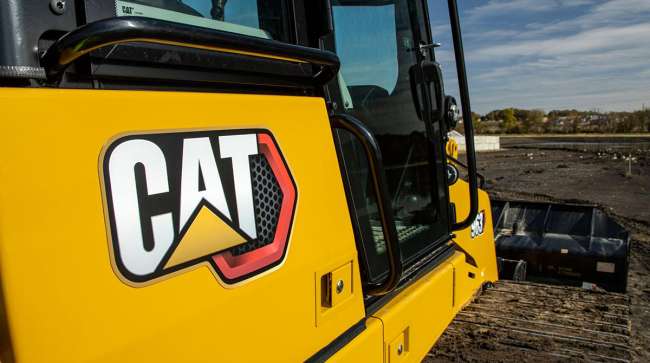The Growing Toll of Tariffs on Caterpillar’s Business
Caterpillar Inc., a giant in mining and construction machinery, has upped its expected cost from tariffs to nearly $1.8 billion this year, a sharp increase from earlier projections. This adjustment comes just weeks after the company reported its quarterly performance, signaling tighter trade pressures and fluctuating tariff policies impacting its bottom line.
Initially, the company had estimated tariff-related expenses between $1.3 billion and $1.5 billion for the full year, with around $500 million allocated to the third quarter alone. However, recent developments, especially concerning tariffs on steel and aluminum, have forced Caterpillar to revise these numbers upward, underscoring how volatile the trade environment remains. The company highlights ongoing steps to mitigate the financial blow, though negotiations remain unpredictable.
Tariffs and Their Specific Impact
The surge in tariff costs is largely linked to what’s known as section 232 tariffs on steel and aluminum imports, which impose additional levies on these key raw materials. As these metals form a significant part of Caterpillar’s supply chain, the tariffs have pushed production costs higher, squeezing profit margins.
Here’s how the tariff impact is expected to unfold according to Caterpillar’s latest outlook:
| Periodo | Estimated Tariff Cost |
|---|---|
| Third Quarter | $500 million – $600 million |
| Full Year | $1.5 billion – $1.8 billion |
Financial Forecast Adjustments
Despite this increased tariff burden, Caterpillar has maintained its sales and revenue forecasts from August. The more significant concern lies in the company’s adjusted operating margins, which are now predicted to hover near the low end of their targeted range. This margin pressure reflects the challenges in balancing rising costs without passing all of them on to customers or sacrificing competitive pricing.
Broader Implications for the Logistics and Transportation Sector
While Caterpillar itself remains a manufacturing powerhouse, the ripple effects of tariff hikes reach across the logistics industry. Every increase in production cost potentially translates to changes in freight rates, shipment volumes, and supply chain dynamics. For operators and providers handling heavy equipment freight or distributing construction materials globally, these cost pressures can alter the logistics playbook.
For instance, shifts in manufacturing costs might influence buying patterns, causing fluctuations in demand for transport services like road haulage, container shipping, and freight forwarding. Companies specializing in moving bulky machinery, whether it’s for construction sites or mine locations, may need to reassess their pricing strategies and operational efficiencies to adapt.
Adaptability in Logistics: Key to Weathering Trade Uncertainty
In such turbulent times, having a versatile and reliable transport solution becomes invaluable. Platforms like GetTransport.com come into focus—offering users worldwide an affordable gateway to manage cargo transportation, regardless of scale. Be it relocating office equipment, shifting bulky industrial goods, or organizing international freight shipments, streamlined, cost-effective transport options are more critical than ever.
How Tariffs Can Affect Global Freight and Supply Chains
- Increased production costs may lead to higher shipping volumes for companies stockpiling to avoid future tariffs.
- Logistics providers might see uneven demand as supply chains adjust to trade policy changes.
- Cross-border freight consultants and couriers need to monitor evolving tariffs to optimize routing and costs.
Reliability Beyond Numbers: The Value of Personal Experience
While expert reviews and financial predictions serve as valuable guides, nothing beats firsthand experience when assessing the impact of trade disruptions on shipment and delivery. Every logistical puzzle has unique pieces, from the type of cargo to destination specifics. This makes platforms offering transparent pricing and broad shipping options quite the catch.
GetTransport.com empowers users to explore these options globally at competitive rates, allowing them to make well-informed decisions that avoid unnecessary overspending or last-minute hassles. Its user-friendly interface makes it simple to handle a range of transport needs—from house moves and office relocations to the forwarding of palletized and bulky goods—so customers remain in the driver’s seat throughout their haulage journey. Reserve su viaje en GetTransport.com to experience this seamless blend of affordability and convenience firsthand.
Looking Ahead: What This Means for Global Logistics
While the increased tariffs hitting Caterpillar might not send shockwaves through the entire global logistics industry, they serve as a timely reminder of how intertwined manufacturing costs and freight operations really are. Trade policy fluctuations can swiftly cascade into logistics challenges, from shifting freight demand to cost recalibrations across supply chains.
With that in mind, staying abreast of such developments is crucial, particularly for a dynamic platform like GetTransport.com that prioritizes keeping pace with a constantly evolving world. Whether you’re managing international delivery or planning a local haul, understanding these external forces can help shape smarter logistics choices. Start planning your next delivery and secure your cargo with GetTransport.com.
Concluyéndolo
Caterpillar’s revised tariff cost outlook highlights the growing pressures on material costs and profit margins amid an unpredictable trade environment. While their revenue expectations remain steady, the added tariff expenses reflect broader shifts that resonate through the freight and transport sectors. For logistics providers and customers alike, this underscores the importance of adaptable, reliable, and cost-effective transportation solutions.
Plataformas como GetTransport.com are stepping up by offering transparent, global transport options catering to a wide array of shipment needs—from bulky machinery to everyday parcels. By combining affordability with convenience, they help simplify forwarding, dispatching, and haulage challenges in an ever-changing landscape. This makes them an invaluable ally for anyone navigating the complex routes of modern logistics.

 Caterpillar Revises Tariff Impact Estimate to $1.8 Billion, Highlighting Trade Disruptions">
Caterpillar Revises Tariff Impact Estimate to $1.8 Billion, Highlighting Trade Disruptions">